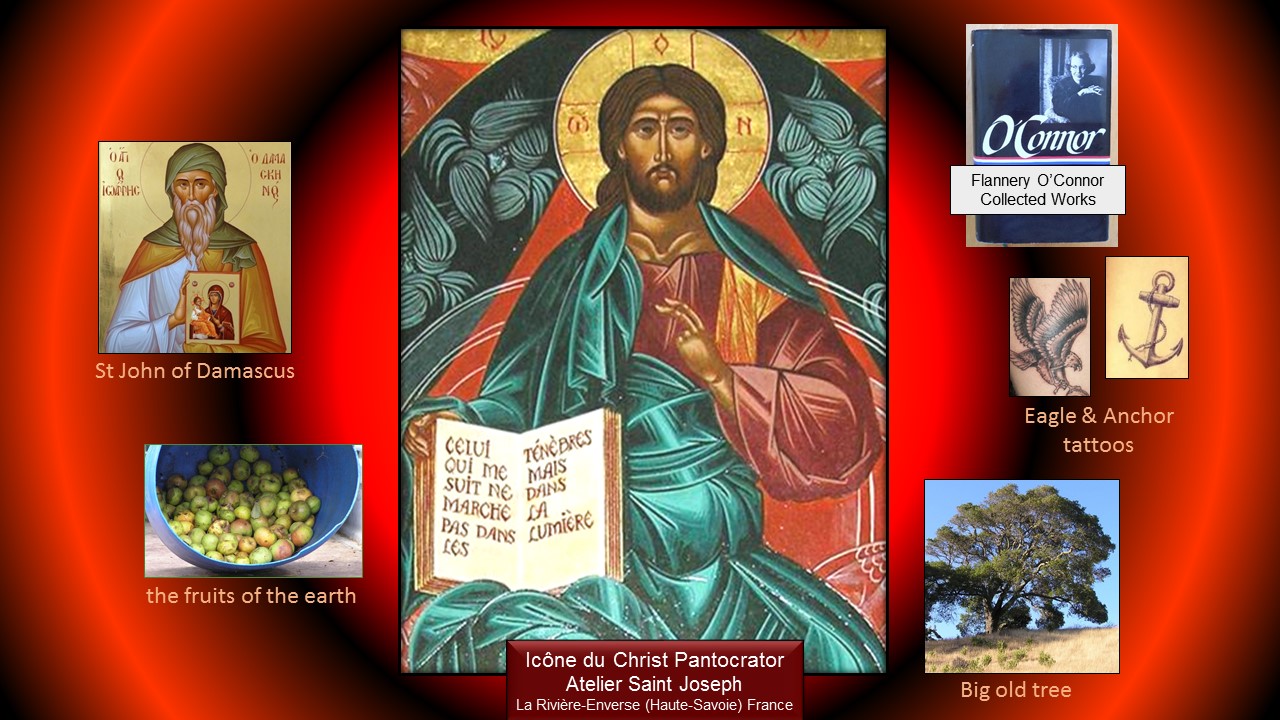

|
Le blog de la Bergerie
|
"You’re tempting sin," she said, “and at the judgement seat of God you'll have to answer for that too. You ought to go back to selling the fruits of the earth."
In my Church History class, we are now studying the Fathers of the 6th, 7th and 8th centuries, learning about St John of Damascus powerful writings against the folly of the iconoclasts. He wrote to defend the reasons why images of Christ (and the Theotokos and the saints) are permitted, he wrote to uphold the true understanding of the Incarnation and why and how it has radically changed everything.
This is not a minor negligible heresy, the waves of the iconoclasts persecutions went on for over two centuries in the East where icons were destroyed, monasteries were vandalized and smashed to pieces, lives were lost, people were tortured and killed.

My teacher of Church History has translated St John treaty and, in the introduction of his book, he has the most interesting footnote on Flannery O’Connor: “For an edifying fictional portrayal of iconoclasm in the American religious consciousness, see Flannery O’Connor’s story “Parker’s back”. I happen to love Flannery O’Connor’s stories of faith and relationships, grotesque and violence, in the South in the 40’s and 50’s, and I have her collected works. So I reread it right away and I saw in it a deeper confrontation than I had realized before.
Heresies, past or present, have been following the Church since the very beginning, fanning the flames of fear and violence, pride and hatred, enticing us to stray from the truth, confusing us with the temptation to veer off into tangents, refusing all or parts of the teachings of the Church.
In “Parker’s back”, the ending of the story is fierce and pathetic, as the final confrontation unfolds between Sarah Ruth (the one who is against tattoos and images of God - and spoke constantly of the judgment seat of God) and Parker (the one who is driven to fill every inch of his body with tattoos, who says he does not know God nor care for God - but develops an uncanny attraction, even reverence, for the “haloed head of a flat stern Byzantine Christ with all-demanding eyes” now on his own back)…
As Sarah Ruth strikes and thrashes Parker with her broom, I could not help thinking of the ones who destroyed furiously the temple of Palmyra last month. Not only demolishing cultural artifacts but performing horrific decapitations. Whether it is ethnic or cultural cleansing, we are in the end, all of us, loosing.
“2015 will be remembered in our memory as a true annus horribilis for humanity world heritage. Iraq, Syria, Mali, Yemen, Nepal…. Destructions are happening at a frenetic pace” says Irina Bokova, General Director of Unesco, who is launching a world coalition to stop the cultural cleansing perpetrated by such groups and who led the adoption of UN Security Council Resolution 2199 to officially recognize the link between illicit traffic and security.
The amount of alarming global news has reached a feverish pitch. I find it overwhelming but I know where to turn for guidance and clarification.
As a believer in Christ and a member of the Catholic Church, I turn to prayer, I read and I listen, I strive to exercise prudent judgment and to form my conscience, which makes me appreciate even more the fullness of the Catholic Church in its doctrines and dogma, in his theologians and in his saints. The love of Christ should open our hearts, spread his light in us and around us, and protect us from the pride of isolation, from the temptation of following the furious winds of folly...
Michele Szekely @ 2015-2021
first posted on the site Catholic365
here .